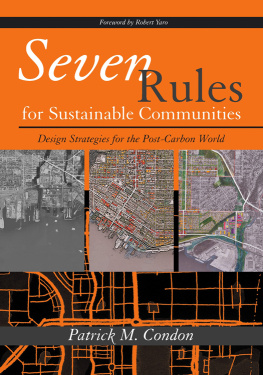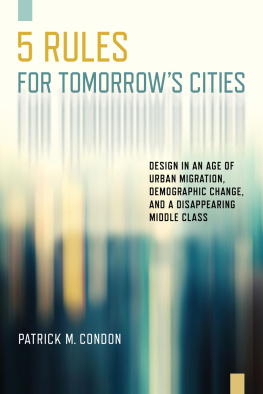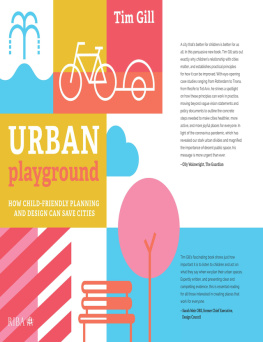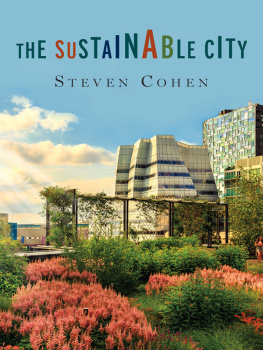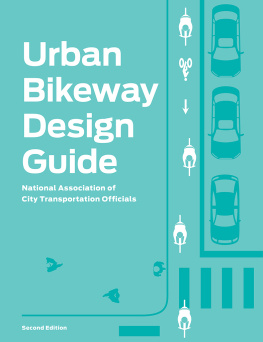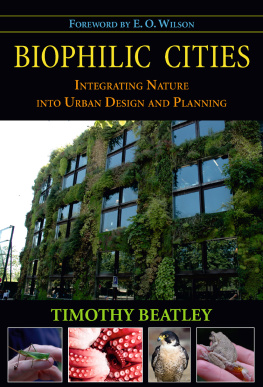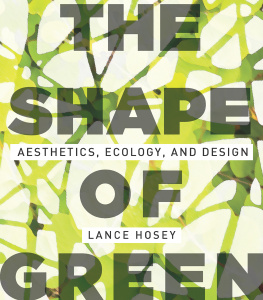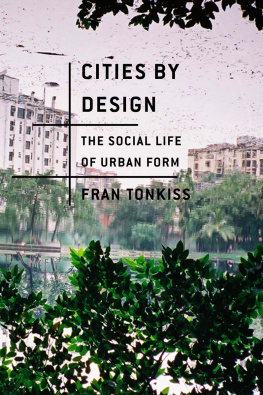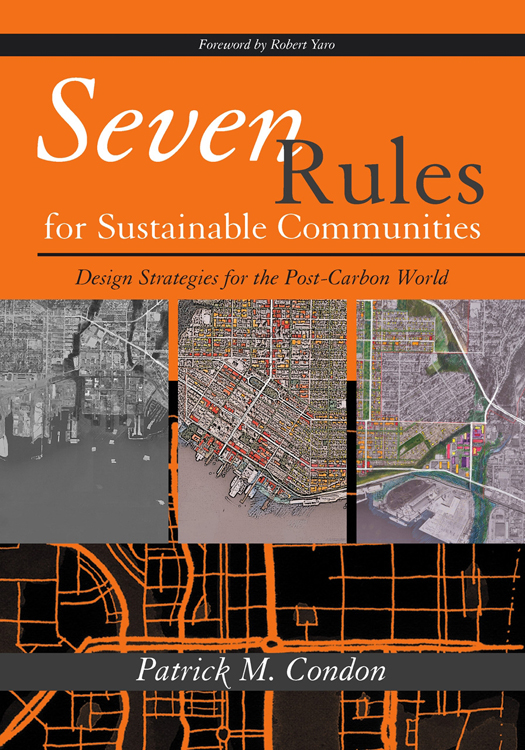Acknowledgments
Thanks are owed to many people, but I must acknowledge a few in particular. Without them this book either would not exist or would be a much lesser work. First, to Island Press, publishers of books, such as this one, that attempt to bridge the gap between theory and practice. Special thanks to my editor, Heather Boyer, for having both the strength to insist on changes that made this work better and the wisdom to listen to alternatives when they were clearly presenteda very difficult balance to maintain.
Next I want to acknowledge all of the members of the Congress for the New Urbanism (CNU) for working so very hard for more than two decades, against terrible odds, to change policies and practices that produce sprawland thereby moving the everyday practice of building cities gradually toward sustainability. My conversations with CNU members, mostly over the Internet on listservs, have been tremendously important to my growth as a writer and a scholar, and in formulating what I hope is a consistent theory of sustainable urban design.
Now I turn to a very special thank you to Ms. Kari Dow, University of British Columbia (UBC) master of landscape architecture 2008. Kari has worked with me on this project for over two years, first as a student in landscape architecture at UBC and later as a staff researcher at the Design Centre for Sustainability at UBC. Her contributions are manifest in the extensive research that supports the main text and in the elegant presentation of that research in the form of research summary notes. I had intended that there be a smooth flow from main text to research notes, and a similarly smooth flow to the more in depth supporting references. I had hoped that having immediate access to this information while reading each chapter would reinforce the scientific rigor of the book while still keeping the text accessible. What sounds easy in principle became devilishly difficult in practice. Few people could have managed this task with the intelligence, determination, and seeming ease exhibited by Ms. Kari Dow. Take note of this name. You will be hearing much more from her in future years. Also a name you will want to remember is that of Helena Farrell, a dedicated intern who traveled from Massachusetts to Vancouver to help us understand the streetcar city concept.
Finally, thanks go to the University of British Columbia for allowing me the freedom to be the best I can be, in the way I best know how. Thanks also to my UBC colleagues in the Design Centre for Sustainability, a group that is as passionate about advancing sustainable communities as I am. Heartfelt thanks also go to our U.S. partner, the Lincoln Institute of Land Policy, and in particular to Armando Carbonell, chairman of the Department of Planning and Urban Form, for a fall 2007 Lincoln Institute research fellowship, during which many of these ideas came together.
Of course, in the end, such work requires money. Thanks to the Graham Foundation for providing the seed money to begin this effort, and to the UBC James Taylor Chair Endowment Fund for providing the money to finish it.
Conclusion
The last of the rules introduced in chapter 1 is love one rule, love them all . The essence of a sustainable community is found in its integrated systems. It does no good if there are jobs close to home but the street network still frustrates moving by any means other than a car. It does no good to be a five-minute walk from commercial services and transit unless this system is scaled up to allow for reasonable access to walkable destinations at the other end of the trip. It does no good to have a linked system of recreation areas and parks if they are devastated by uncontrolled stormwater runoff from adjacent neighborhoods. The seven rules presented in this book are an attempt to simplify what might appear complex: the overlapping and interconnected nature of the body of the world and how we might heal it.
But the most cancerous illness in the body of the world is carbon, and how we seem hell bent on taking every bit of carbon locked up in the land since the carboniferous period and launching it into the ten-mile-thin band of our atmosphere. No responsible planner, architect, landscape architect, politician, or developer can escape the moral imperative to change the way he or she does business in response.
But change what? Make buildings more efficient? Make cars operate on batteries? Erect new windmills? Yes to all of the above, but that is not enough. No amount of technological fixing can solve this problem if our per capita energy use continues to grow, if our per capita automobile use continues to climb, if the percentage of our gross national product devoted to transportation systems of all types (not just cars) continues to increase, and if our way of building new communities ignores the fundamental rules of sustainable city planning. Even absent the climate change problem, our way of building cities is unsustainable. As William Rees says, if everyone on the planet lived like North Americans, it would take six planet earths to support itand this without even considering the carbon problem.
Equally blind are those who hypothesize wildly new forms of cities: growing food in skyscrapers, carbon-free monorails connecting every house, mining of oceans for food and materials, mega structures like concrete beehives for millions. Such proposals ignore the immense material costs of their outrageous proposals. The earth simply cannot supply the materials and absorb the waste from such a globewide urban transformation. The concrete alone would tip us into atmospheric carbon overload. We have no choice but to work from what we have, no matter where on earth we are, and rebuild it for this new emergency. I offer the streetcar city as a way to do that.
Whatever is the solution, we know for sure that the North American city will need a dramatic retrofit. According to the United Nations Intergovernmental Panel on Climate Change, we have only fifty years to do itbut perhaps this fifty-year time frame is the most hopeful part of the message. In the fifty years between 1950 and 2000, the mechanics of the North American city changed entirely. Walking was replaced by driving, streetcars were replaced by buses and cars, community centers were transformed from key intersections in the grid where walking predominated to enclosed malls at the center of a dendritic infrastructure swarming with cars. It seems inconceivable that this transformation to every aspect of the city occurred so fast, but it did; and if we did all that in fifty years, then we can achieve a similar shift in the next fifty. But if we are to reduce our total carbon production by 80 percent, we had better start right away. New developments take ten years from proposal to occupation, city plans can take decades to realize, regional transportation plans typically have a thirty-year horizon, and natural systems can take fifty years or longer to heal.
Finally, there is a subtext to all of this, one that has been touched on here and there in this volume but was not central to the argument. These seven rules stand on their own as practical solutions to the crisis we face, but taken together they create a world that would necessarily manifest itself in experiential terms. The qualities of such a world would, I believe, show up as the very positive phenomena that Jane Jacobs isolated in her examination of New York (Jacobs, 1961): homes interface with the public realm in organic ways, the street becomes the milieu for social interaction, different demographic and cultural groups cross fertilize, moving through the city is communal, and nature is always within easy reach. Low-carbon, sustainable communities are just starting to emerge and to provide strong evidence that the qualities Jane Jacobs identified may be intrinsic to a well-built and intelligently designed sustainable community. But to explicate the qualitative phenomena of the sustainable low-carbon future would take another book, and this one ends here.

